Baileya multiradiata, Desert Marigold
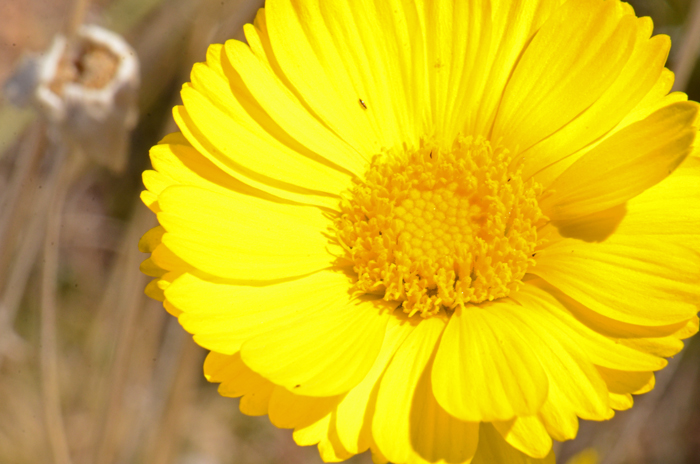
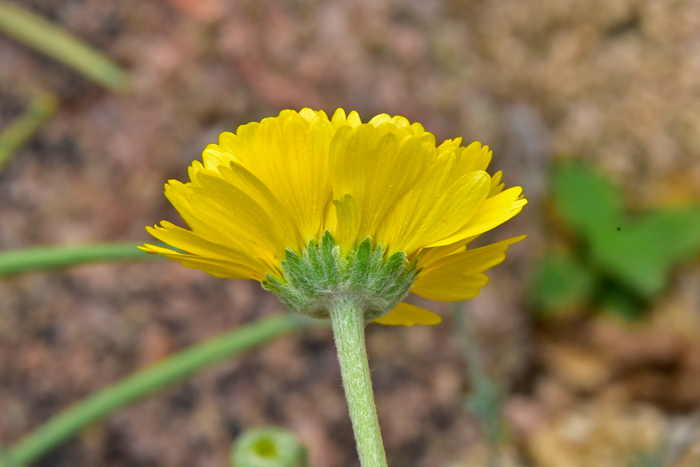
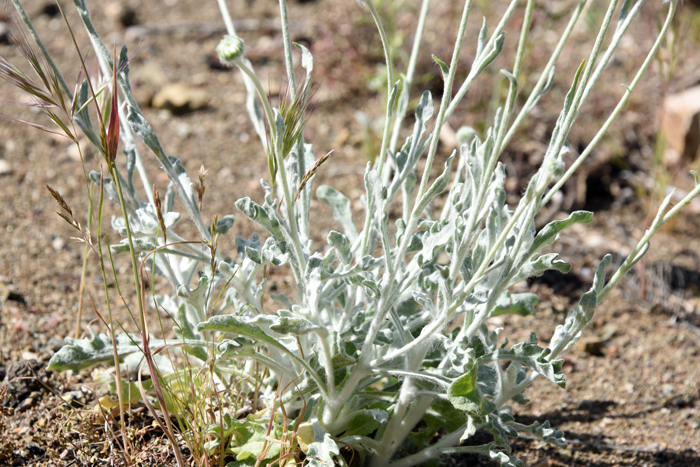
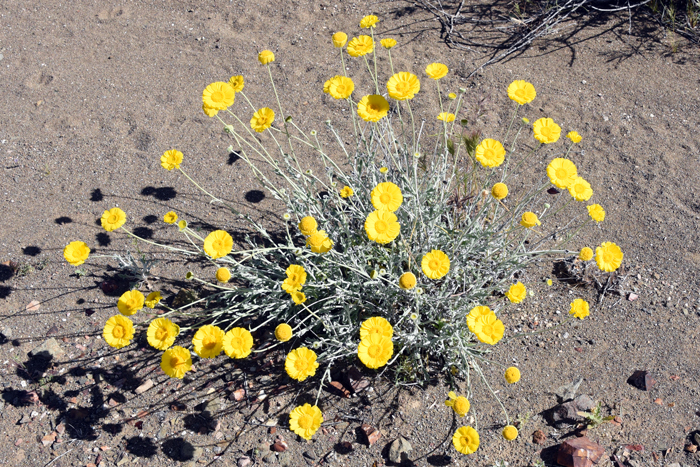
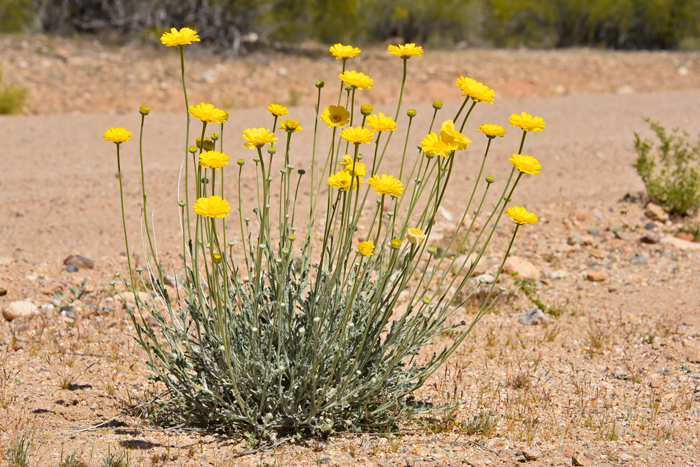
Scientific Name: Baileya multiradiata
Common Name: Desert Marigold
Also Called: Desert Baileya, Many-flowered Desert Marigold, Paper Daisy, Showy Desert Marigold; (Spanish: Hierba Amarilla)
Family: Asteraceae, Sunflower Family
Synonyms: (Baileya australis, Baileya multiradiata var. nudicaulis, Baileya multiradiata var. thurberi)
Status: Native
Duration: Annual, biennial or short lived perennial.
Size: 8 to 16 inches (20-40 cm) tall.
Growth Form: Forb/herb; forms clumps of mounding gray woolly plants covered with dense, fine grayish-white hairs (tomentose), branching at base; stems growing horizontally but turned or curving up (decumbent) (ascending); plants with soft and woolly covering hairs (floccose).
Leaves: Greenish-gray or silvery-green; mostly basal; woolly or covered with dense white or grayish-white down or wool (canescent); pinnately lobed with linear lobes.
Flower Color: Bright yellow; large, 1 or 2 inch (1.5-5 cm) showy, single solitary flowers; long flowering stems or peduncles 4 to 12 inches (10-30 cm) long; flower heads with both ray (34 to 55) and disk (100 +) florets (radiate), ray "petals" moderately to deeply 3-toothed; bracts or phyllaries surrounding heads linear-lanceolate; fruit is a cypsela.
Flowering Season: March to November
Elevation: 1,500 to 5,000 feet (460-1,500 m).
Habitat Preferences: Lower deserts, open sunny areas, sandy plains and mesas, gravelly washes, hillsides, dry soils, common along roadsides.
Recorded Range: Native to the southwestern United States; AZ, CA, NM, NV, TX, UT; also native to northern Mexico in the States of Sonora, Chihuahua, Coahuila, Durango and Aguascalientes. Desert Marigold is found throughout most of Arizona.
North America & US County Distribution Map for Baileya multiradiata.
North American species range map for Baileya multiradiata:
North American range map courtesy of Virginia Tech, Dept. of Forest Resources & Environmental Conservation
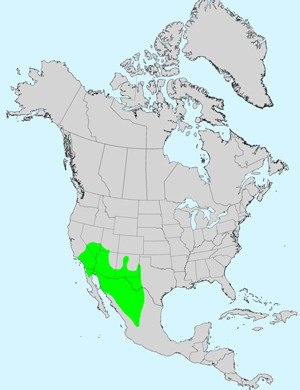
U.S. Weed Information: Unknown
Invasive/Noxious Weed Information: Unknown
Wetland Indicator: Unknown
Threatened/Endangered Information: Unknown
The genus Baileya was published by William Henry Harvey and Asa Gray in 1848.
In the Southwestern United States: Arizona, California and Utah each have 3 species of Baileya, Nevada and New Mexico each have 2 species, Texas has 1 species. All data approximate and subject to revision.
Comments: Desert Marigold is a short-lived perennial to annual species and one of the more common yellow flowers over a wide range which blooms for long periods along roadsides in early spring sometimes through the fall. This species often grows in large clumps and has a distinctive look with several long, naked stems each topped with showy bright yellow flowers. Although found in the Sonoran and Mojave Deserts, Desert Marigold is considered more of a Mojave Desert species.
The common name Desert Marigold is mis-leading as this species is not even a relative of the true "Marigolds".
Comments: Desert Marigold is often used as a commercial landscape plant in the southwest by homeowners and often used as a roadside planting by state highway departments.
It is very similar to Woolly Desert Marigold, Baileya pleniradiata which is more of a fall bloomer. According to Flora of North America, both species can be observed in the same areas and hybrids have not been recorded. I would agree as I have seen many occurrences of each species and characteristics always appear distinct.
According to Arizona Flora, horses crop the flower heads off and "fatal poisoning of sheep and goats eating this plant on overgrazed ranges has been reported."
In Southwestern Desert Flora also see Woolly Desert Marigold, Baileya pleniradiata.
In addition Desert Marigold and other "Daisy" type Asters may by visited by butterflies and other small insects.
The genus Baileya was published by William Henry Harvey and Asa Gray in 1848.
The species epithet "multiradiata" (multi-:) a prefix indicating many and (radia'ta/radia'tum:) meaning spreading out like rays, usually the petals of florets; thus a reference to the many spreading ray petals.
See species account from Native American Ethnobotany, University of Michigan, Dearborn.

